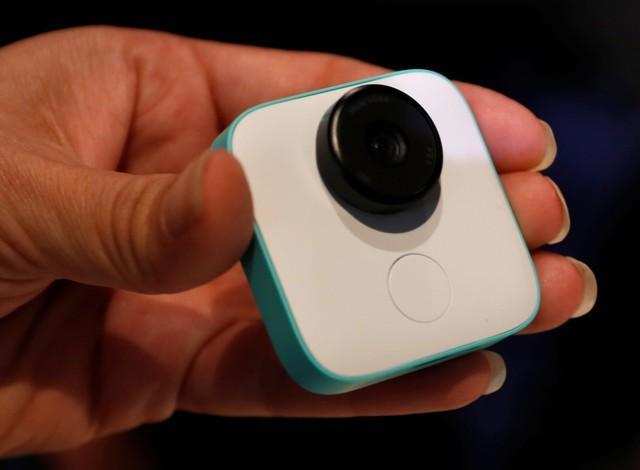Over the past decade or so Google has been naming its incremental Android versions as desserts and in alphabetical order. The last Android version Android 9.0 was named Pie and it now appears that this is the last time Google has named its Android version after a food item. The company has announced that as of Android Q, the names of incremental Android updates will no longer be named after desserts. As a matter of fact, they will not be named at all. Android Q will be called Android 10.
Google explained in its blog that Android's dessert names were not being properly understood by the global community. Google gave examples of the letters L and R which were not distinguishable when spoken in some languages.
What this means is that when someone heard the Android Lollipop it was not always clear in these dialects that it was the Android version after Kitkat. Google also mentions that Pies are not popular in many parts of the world and neither are marshmallows. Numbers, on the other hand, are universal and are recognised in every part of the world.
The company mentions that there were several dessert options considered for naming Android Q but at version 10 it was time to make a change.
The company mentions that there were several dessert options considered for naming Android Q but at version 10 it was time to make a change.
Google is also changing the look of the Android logo after it was refreshed last in 2014. The new logo ↑↑↑ Above Image ↑↑↑ has the Android bot in it along with a new font and new black colour instead of the original green. Google will start using the updated logo in the coming weeks with the final release of Android 10.
WHAT DEVICES ARE INCLUDED ?
Google expanded the list of supported devices outside of its Pixel line, including 21 total devices from 12 different OEMs.
Android 10: Features
As is usually the case, Google only talks about a handful of features that it feels are important to users and developers alike. As we continue to test and use Android 10, we'll surely find new features and will update this post as needed. In the meantime, here are some features Google has talked about.
PRIVACY FIRST
The biggest area of focus of Android 10 appears to be related to user privacy. For example, users can now limit when an app has access to their location. In the past, you either gave an app access to your location, or you didn't. Starting with Android 10, you can limit an app's location access only when you are using the app.
There are also finer controls for file management, restricting access to device identifiers such as the IMEI, serial number, and other IDs that can help track a user.
BUBBLES!
Similar to Facebook Messenger's Chat Heads, Bubbles will display small circular, floating alerts on top of whatever it is you're currently doing on your Android device. Users will have to approve each app that wants to use Bubbles as a notification method, so your screen shouldn't be overrun with alerts from every app you have installed.
 |
| Google, Inc. |
SHARING SHORTCUTS
I think every Android user can relate to how slow the share sheet loads. Right now, you tap on the share button, and then have to count to ten while the various apps and shortcuts populate and rearrange themselves a handful of times. With Android 10, Google has created new tools that make it possible for the share sheet to load instantly.
At I/O, Google confirmed an official Dark Theme is coming with Android 10. The new theme will darken the interface, reducing strain on your eyes as well as saving battery life.
LIVE CAPTION
For deaf users, Google is adding a Live Caption feature that will add subtitles to any video being watched on the phone. You won't need a data connection to use the feature -- it's all done on the device itself.
PARENTAL CONTROLS
Google's Digital Wellbeing tool is gaining support for tighter parental controls. Parents will be able to approve app installs, set screen time limits, create app limits, and set a bedtime.
With devices like the Galaxy Fold and Huawei X coming, Android 10 includes features to better support for detecting when an app has been paused (perhaps when a display is folded) and when it needs to be resumed (after opening the device), as well as enhanced support for resizing of apps.
DEPTH INFORMATION FROM PHOTOS
Google's Pixel line of phones does a fantastic job of capturing depth in a photo despite only having one camera. Google is integrating some of that technology into Android 10, giving developers and device makers access to the image and the Dynamic Depth captured alongside it through new tools.
GESTURE NAVIGATION
Android 10 adds gestural navigation to the Android platform. Instead of using the staple navigation buttons Android has always had, users swipe and gesture across the screen to go back, return to the home screen, open the app drawer, and trigger Google Assistant. In the final beta release, Google continued to tweak and change how gestures behave in Android 10 -- and then tried to explain its reasoning.
If terms like Native MIDI API, ANGLE on Vulkan, or Neural Networks API 1.2 are more your thing, then be sure to read through the bottom section of this Android Developers blog post, where the company details those new features, along with new Wi-Fi performance modes, improved peer-to-peer and internet connectivity.
Read More ↓↓↓
VoLTE vs ViLTE
How to Get 6GB 4G Data in Jio @ INR RS 51/- Only
How to Text From your Computer with Android Messages.
Importance of Search Engine Optimization(SEO) for a Website
New Top Level Domain .DEV Know in Detail
accessing proxy sites on Jio connections.?
Read More ↓↓↓
VoLTE vs ViLTE
How to Get 6GB 4G Data in Jio @ INR RS 51/- Only
How to Text From your Computer with Android Messages.
Importance of Search Engine Optimization(SEO) for a Website
New Top Level Domain .DEV Know in Detail
accessing proxy sites on Jio connections.?













